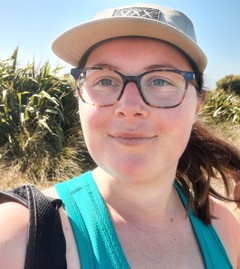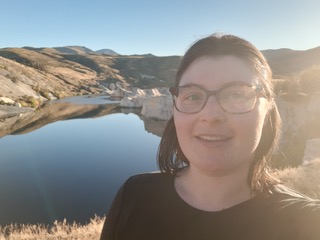
Hi, I'm Lucy! I have been passionate about history and biological sciences from a young age, and during my undergraduate studies I married these subjects by majoring in anthropology, with minors in classical studies and zoology. My BA (Hons) concreted this relationship between arts and science with a dissertation in biological anthropology, and papers in archaeology and bioarchaeology. I returned to postgraduate study after an absence teaching skiing and snowboarding in Canada, where I honed my skills in organisation, listening and imbuing knowledge in a safe and fun environment. The study of humans, either ancient or modern, requires a wide range of perspectives, and I enjoy the puzzle of placing together individual observations in a grounded framework of knowledge. A multi-disciplinary approach to research allows us to address one of the most common questions in bioarchaeology – what was life like for the people who came before us?
My MSc thesis explores childhood embodiments of stress in early non-Māori settlers of Otago, New Zealand. During the mid-nineteenth century, hundreds of thousands of people left their home countries in pursuit of a 'better life' in New Zealand, and a more secure future for their children. Although historical evidence has strongly argued that the early immigrant populace of New Zealand experienced healthier living conditions than in their home countries, this has not been examined at a biological level until recently.
The Southern Cemeteries Research Project, a joint project between the Departments of Anatomy and Archaeology at the University of Otago, has begun recently to examine early settler health. This project has found evidence for diverse international origins, infectious diseases, trauma and physiological stress among the early Otago population. As part of this, my research focusses on elucidating the early lived experiences of physiological stress resulting in enamel formation disruption in early Otago settlers through the histological analysis of enamel. By considering these observations of skeletal stress markers in a wider framework of concurrent bioarchaeological research, a bigger picture of health during the mid-nineteenth century can be drawn, highlighting the nuanced individual life histories that can often be lost to the historical record.

One of the most valuable aspects of this research is the voice it provides to individuals about whom we know very little, as all those studied have come from unmarked graves. In particular, the women, children and non-Europeans (in this case, the early Chinese miners) of early New Zealand are frequently omitted from the historical record. The histological analysis of enamel has also recently become more widely used, and is advantageous when analysing archaeological materials that have been subject to heavy taphonomic disturbances. I look forward to continuing to explore the lived experiences of individuals in the past from a multi-faceted and multi-disciplinary research approach.